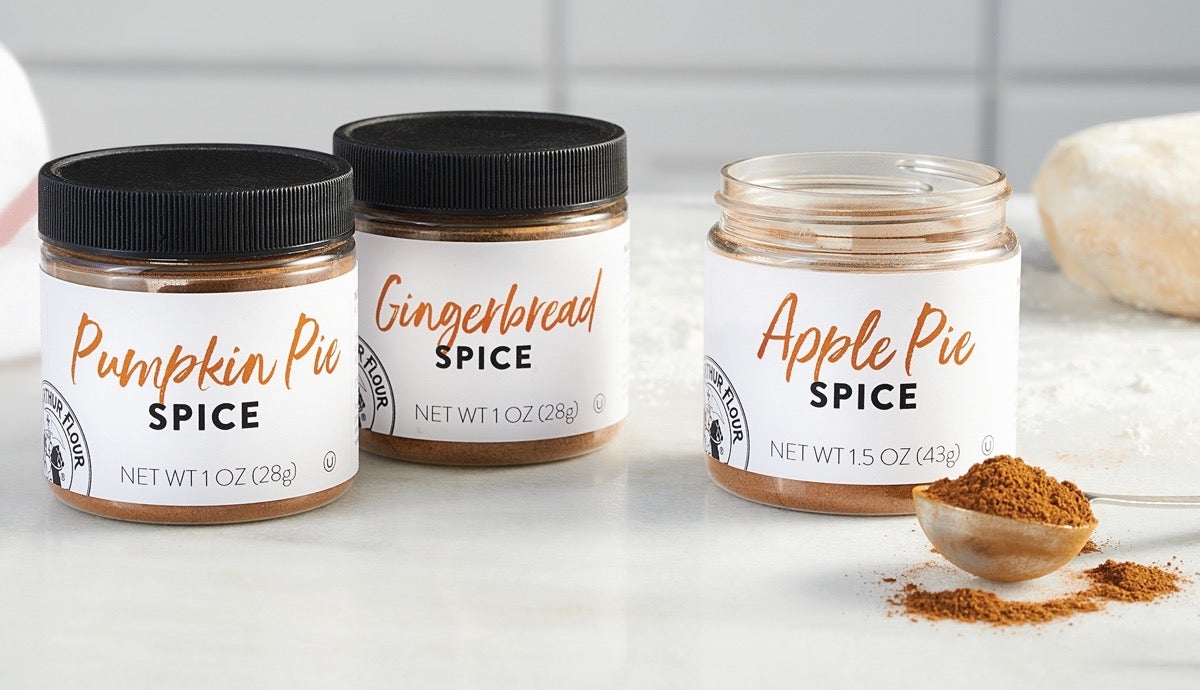The flavors of fall: apple, pumpkin ... and sourdough
Delicious autumn recipes for your discard starter
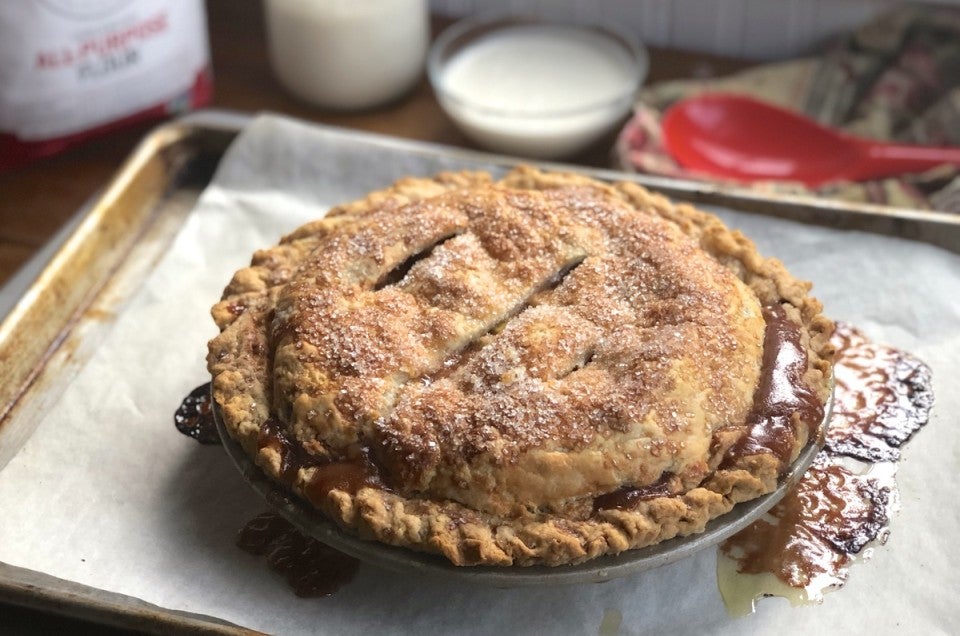

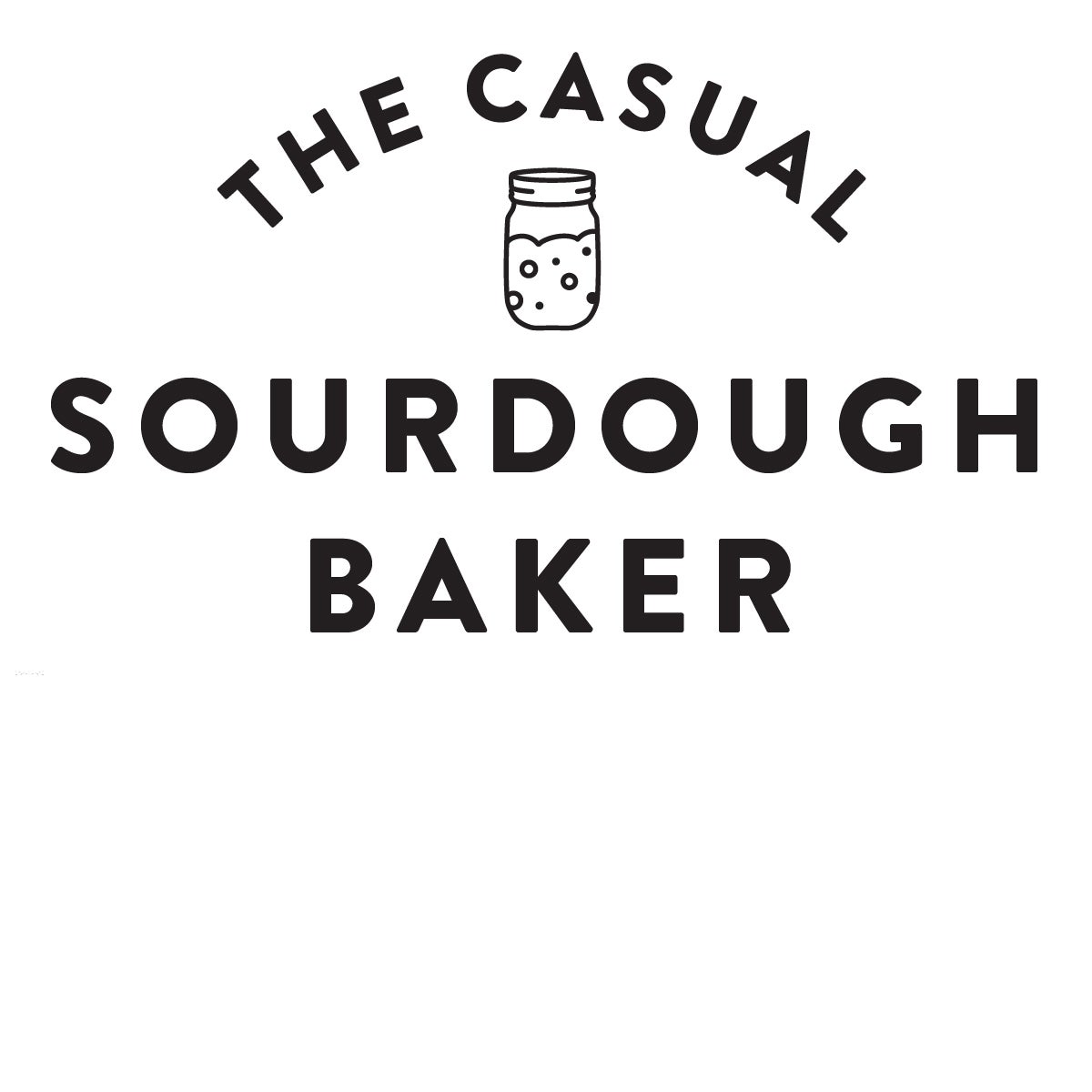 Love sourdough, but looking for a bit more flexibility and ease when you bake with a starter? In The Casual Sourdough Baker, PJ shows you just how wonderfully stress-free sourdough baking can be, from simple but richly flavored loaves to countless easy ways to use your discard. If you're just beginning your journey, our Sourdough Baking Guide lays out the basics you need for success — whether you decide to become serious or go casual!
Love sourdough, but looking for a bit more flexibility and ease when you bake with a starter? In The Casual Sourdough Baker, PJ shows you just how wonderfully stress-free sourdough baking can be, from simple but richly flavored loaves to countless easy ways to use your discard. If you're just beginning your journey, our Sourdough Baking Guide lays out the basics you need for success — whether you decide to become serious or go casual!
* * *
Do you name your sourdough starter? I know a lot of you have come up with very clever names (Lin Manuel Mirandough, Levain Halen, and Clint Yeastwood spring to mind).
But my starter, friendly and loyal as it is, remains unnamed. All I can think of is someone asking, “Hey, this is great bread — what’s in it?” And I’d have to answer “George,” or whatever. Better to be on not quite such close terms with something I’m going to toast and eat!
Which doesn’t mean I haven’t developed a happy relationship with my starter over these past unsettled six months. I used to be a reluctant sourdough baker; now I thoroughly enjoy it. And while I certainly don't follow all the sourdough rules (in fact, I probably ignore most of them), I cheerfully muddle along making bread, cake, waffles, and biscuits that my family just loves.
My most satisfying accomplishment to date, a result of the initial pandemic-related yeast shortage, has been nailing naturally leavened (no commercial yeast) bread. And now I bake sourdough bread at least once a week, sometimes more often, going from pan loaves to freeform to rolls or baguettes and making up my own favorite toast and sandwich bread recipe in the process (more on that in a future post).
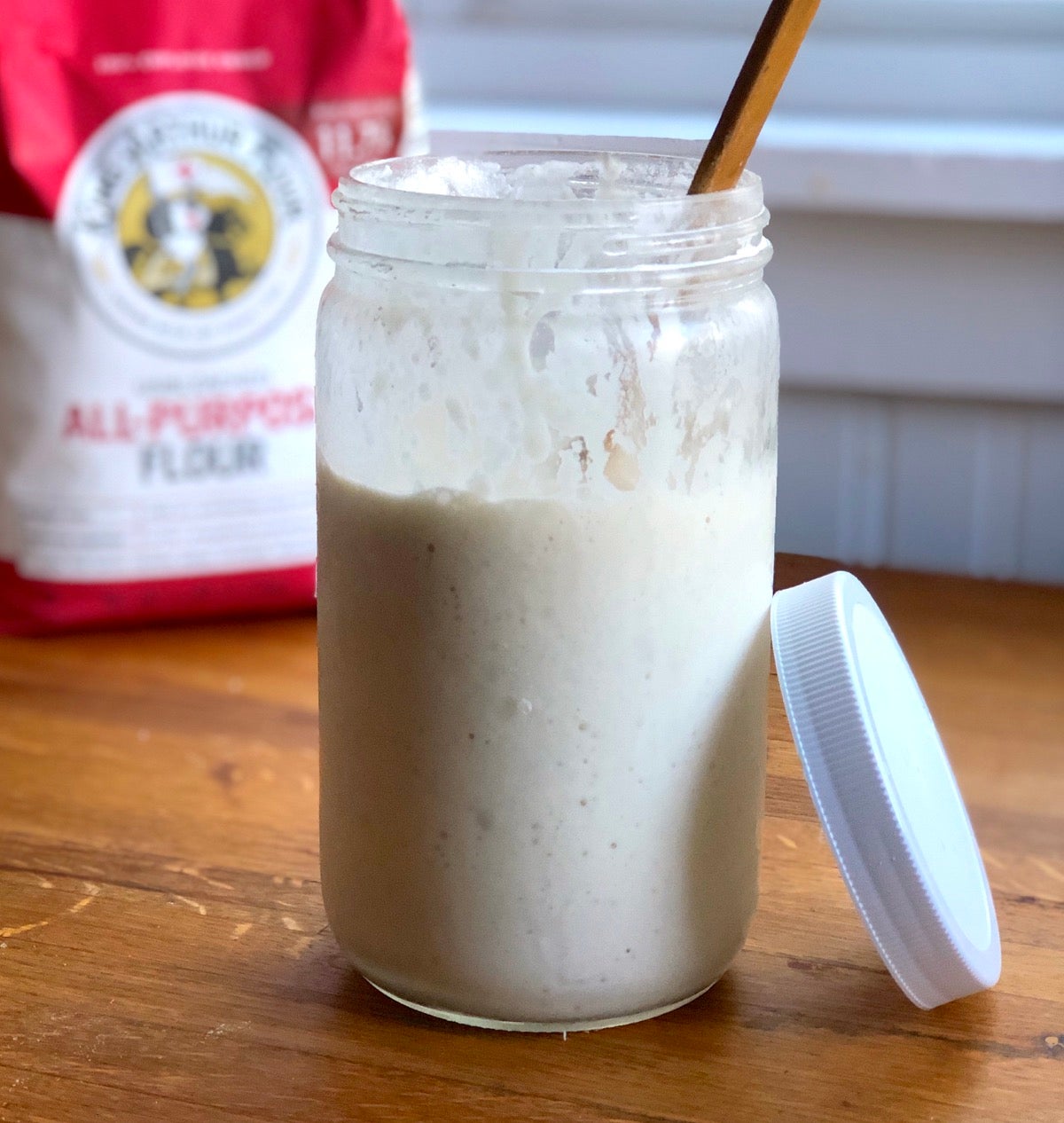
It did take quite a bit of practice for me to reach this point of being confident in my naturally leavened sourdough bread. And along the way I regularly found myself with a big jar of “discard” starter: the stuff you’re supposed to throw away during the feeding process.
Being a boomer whose Depression-era parents never threw ANYTHING away, I simply can’t discard my discard. So I’ve started adding it to many, many baked goods that don’t specifically call for starter. Especially desserts. Because sweet and tangy, right?
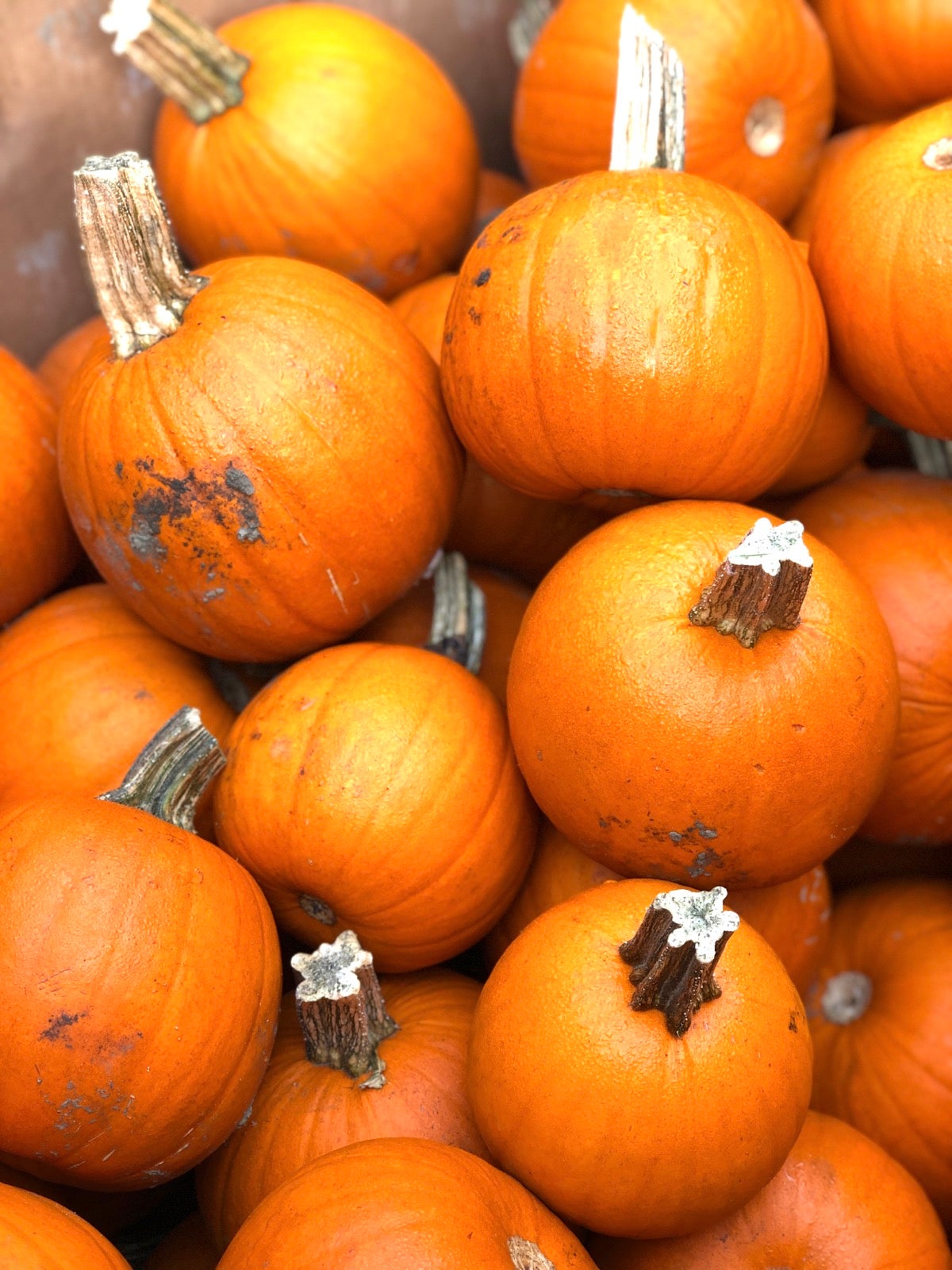
This time of year, with berries and stone-fruit fading but apples and pumpkins on the rise, it feels especially good to stir my simple home-grown starter into all manner of autumnal treats. Like Sugar-Crusted Apple Cobbler. And Pumpkin Cheddar Biscuits.
Any recipe that calls for flour and liquid (water, milk, juice, or the like; not a liquid fat or liquid sweetener) is fair game for substituting discard starter.
When you substitute sourdough starter for milk, buttermilk, or juice, aren’t you losing some of milk's rich fat or juice’s flavor? Yes, you are. But since you’re probably replacing only 1/2 cup or less of any liquid, the loss likely won’t be noticeable, and it's more than made up for by the other attributes sourdough brings to the table. Besides, I’m a casual baker; I simply don’t fuss about minute changes in ingredient amounts (like the .33g of fat that milk would add to each muffin).
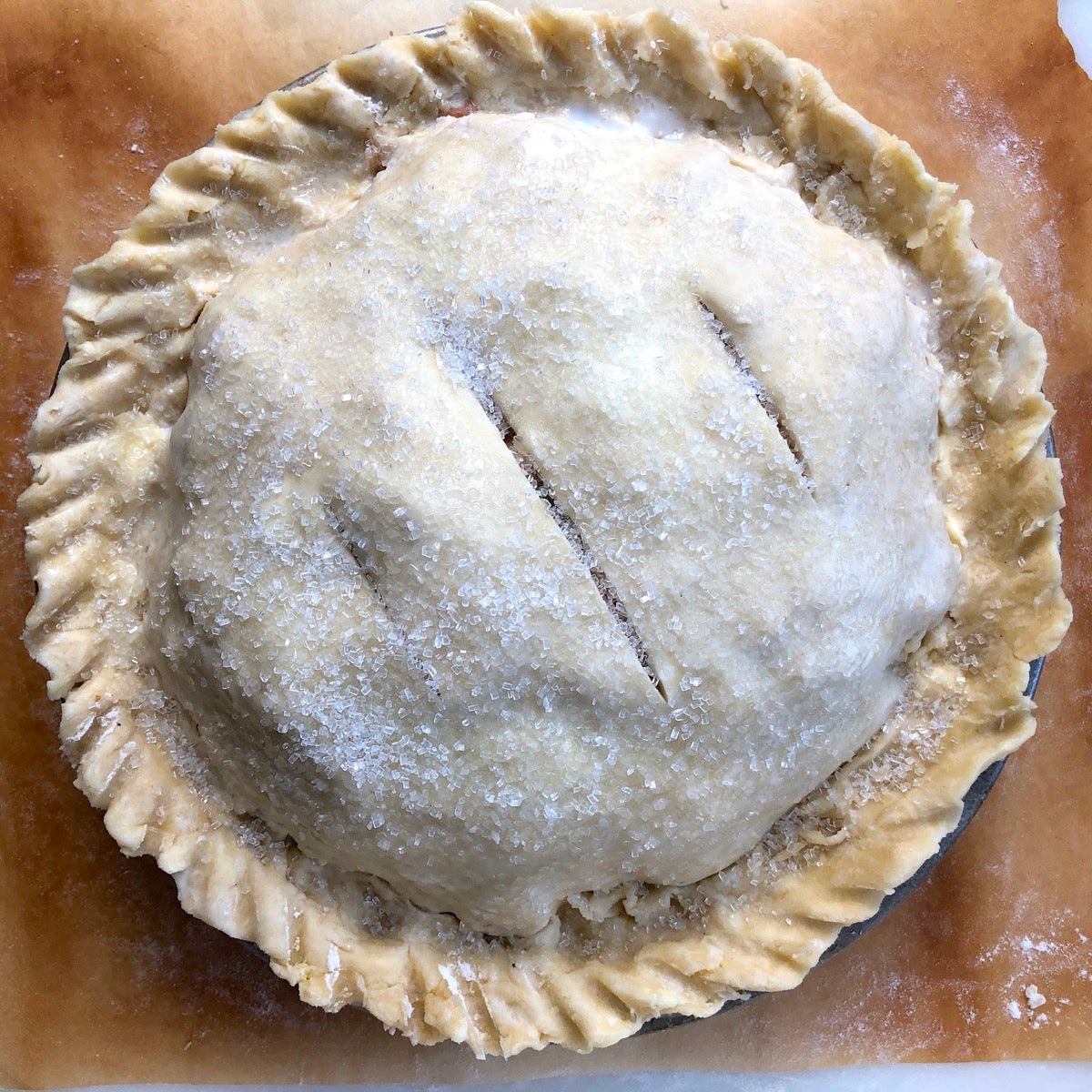
And you want to tweak a perfectly good recipe by adding discard starter because … ?
What about using fed starter instead of discard in these recipes? Sure, go for it. Your rise will be even more exuberant.
Most starters are equal parts (by weight, not volume) flour and water, with a bit of alcohol generated over time as the starter ferments. To substitute discard sourdough starter in any recipe, replace the combined weight of some of the flour and liquid with an equal weight of starter. (Occasionally you'll replace all of the flour and liquid in your recipe with starter, but that's rare.)
Here’s a simple example: To use 227g (8 ounces, 1 cup) discard starter in a recipe, reduce the amount of liquid (water, milk, juice) in the recipe by 113g (4 ounces, 1/2 cup) and the flour by 113g (4 ounces, about 1 cup).
I’ve written an entire blog post on just this simple substitution, so for more specifics take a gander: Adding sourdough to a recipe.
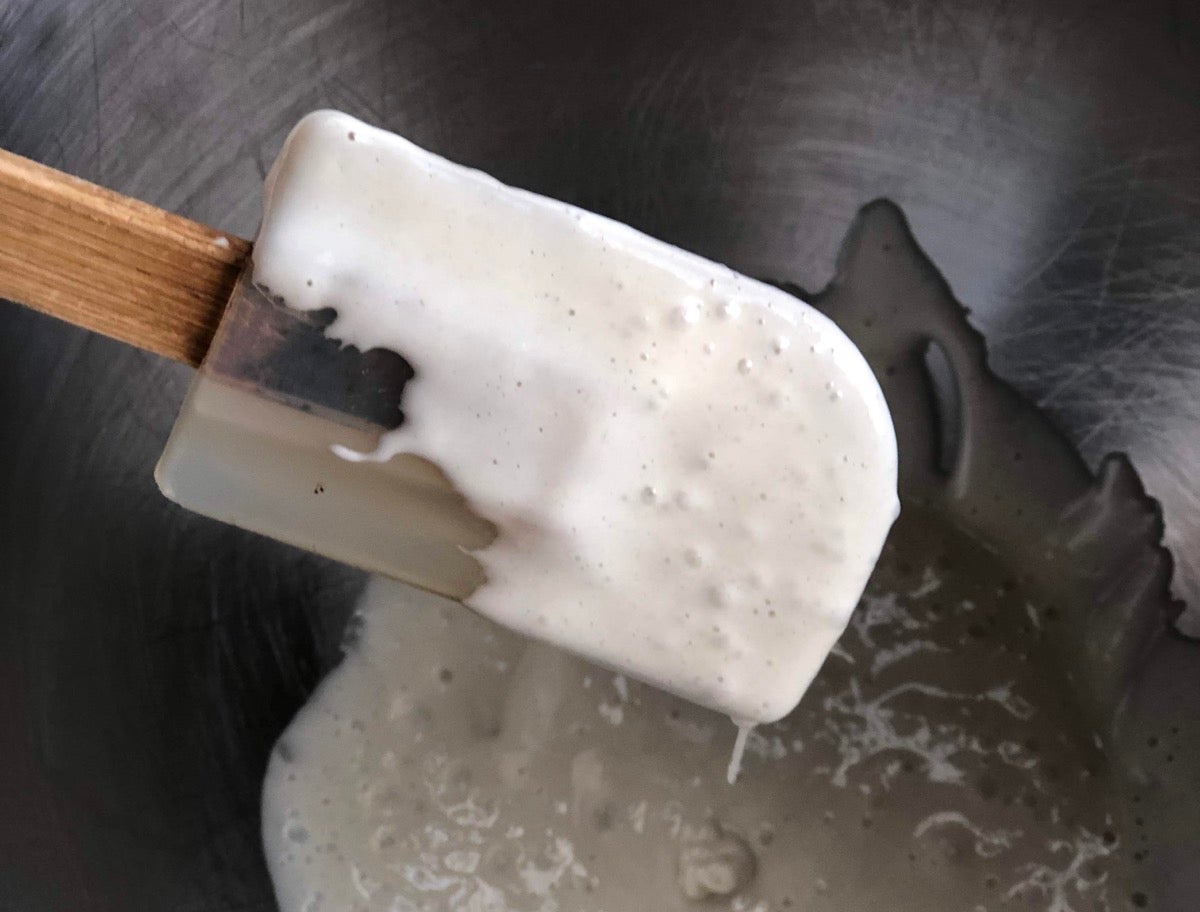
Each of us maintains our starters differently. Some like a stiff, almost dough-like starter; some prefer it in pourable liquid form. Starter can range from barely tangy to mouth-puckeringly sour. Maybe your starter is 100% whole grain. How will you know if your particular starter will work well in your chosen recipe?
I tested the recipes below with my own starter, which is equal parts (by weight) unbleached all-purpose flour and water. Over time in the fridge, my starter goes from a gloppy, pudding-like consistency (when newly fed) to a thick but pourable liquid: think pancake batter. At the same time its acidity increases, settling in at a level that’s definitely pickle-juice sour, but not so much that it makes your ears hurt (you know what I mean).
If your starter is quite dissimilar to what I’ve just described, you may get different results than I detail here. But heck, just jump in and give any of the following recipes a try; I’d suggest starting with these Thanksgiving Muffins. (So you can get started quickly and easily, I've gone ahead and done the substitution math for the muffins, as well as the rest of the recipes here.)
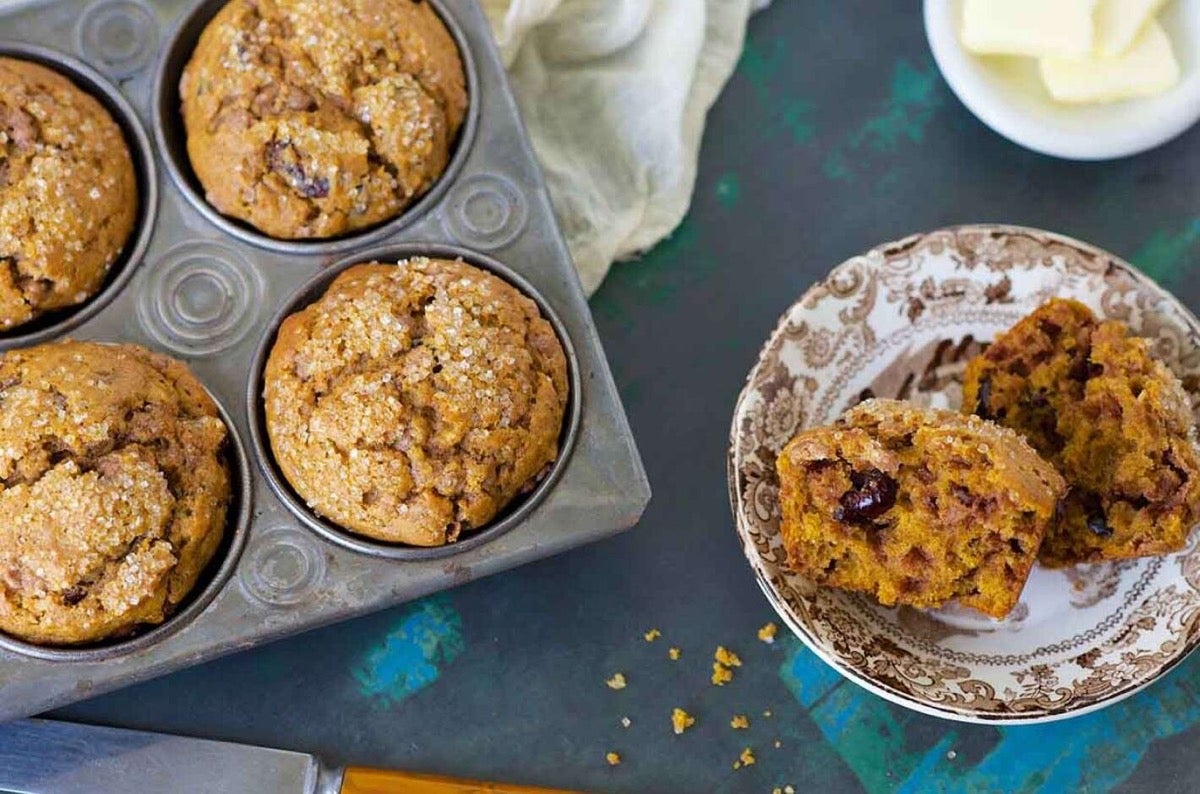
Let’s not relegate these moist, dark, and hearty muffins to Thanksgiving: filled with pumpkin, cranberries, and cinnamon bits, they’re a delicious start to any cool fall day.
How to substitute: Omit all of the all-purpose flour; all of the milk; and reduce the whole wheat flour to 57g (1/2 cup). Add 227g (1 cup) discard starter to the mixing bowl in step 2 of the recipe, when you’re whisking together the wet ingredients, sugar, and spices.
The result: The earthy sweeteners in this recipe — brown sugar and molasses — play nicely with sourdough’s flavor. You may taste a tiny edge of tang, but most likely the muffins will simply taste rich and delicious.
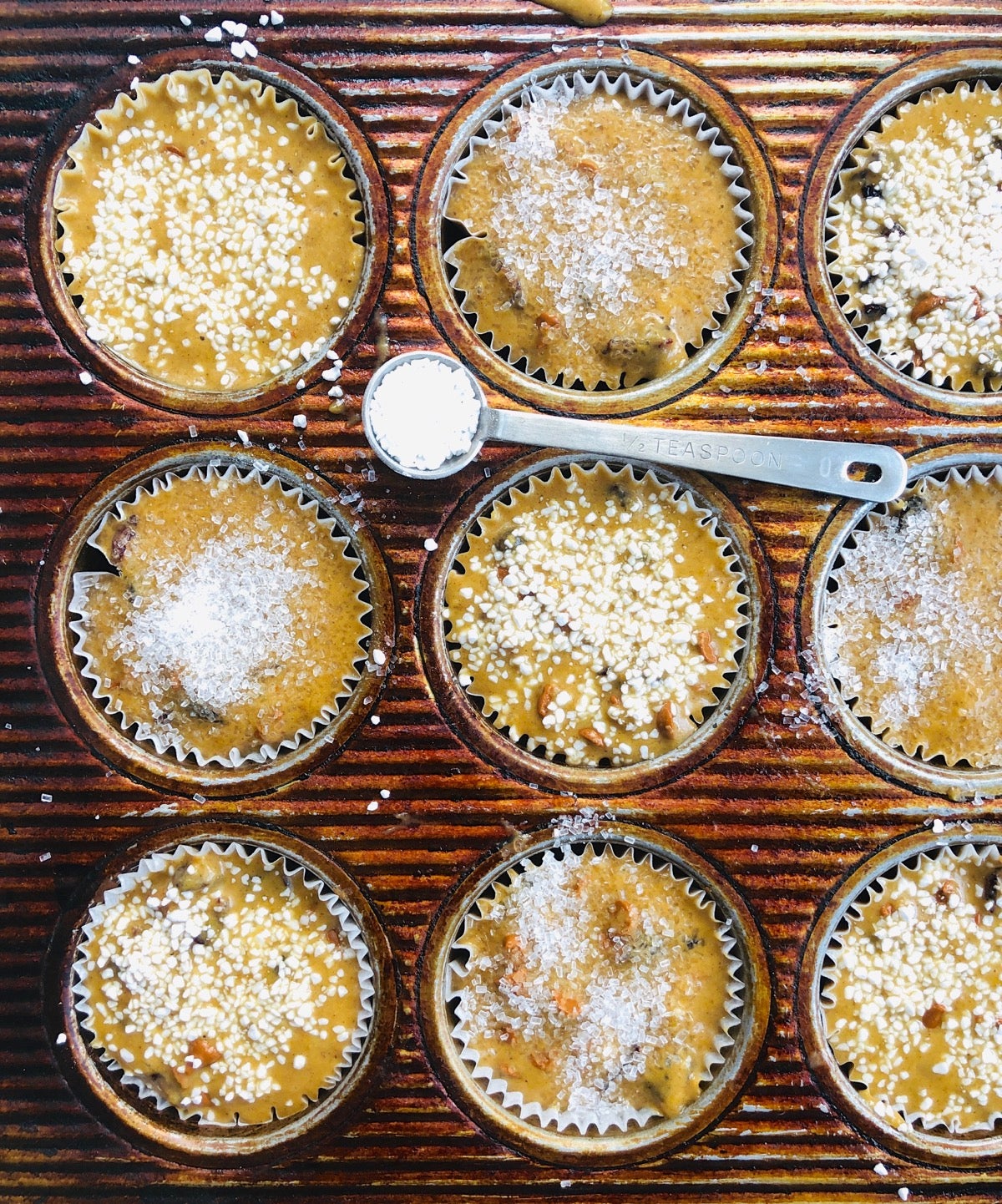
Baker’s tip: Crunchy sugar on top is a nice visual addition. Bright white Swedish pearl sugar is striking, while coarse white sparkling sugar is more subtle.
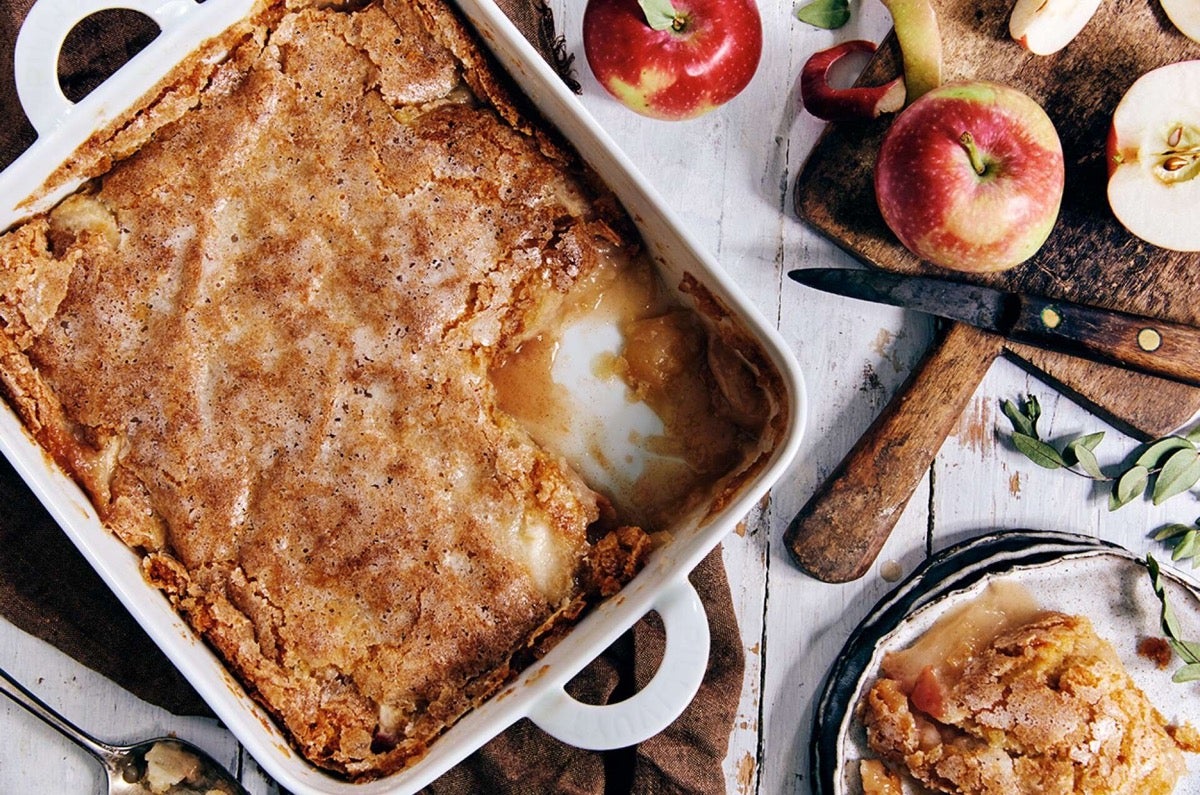
There’s apple cobbler with a cake crust, apple cobbler with a pie pastry crust, cobbler with a biscuit crust — and this cobbler, whose crust is a rich, sweet cross between cake and biscuit. The crunchy sugar on top is a nice touch.
How to substitute: Omit all of the buttermilk and flour. Add 227g (1 cup) discard starter in step 3, where the recipe directs you to stir in the buttermilk and flour.
The result: Charlotte, our test kitchen director, says she’s made this cobbler over and over recently, and I can see why. Once you get past peeling the apples it’s quick and easy to put together, and hey, hot, bubbly apples topped with a buttery, crunchy, sugary crust — what’s not to like? Sourdough’s tang steps in for the flavor originally provided by buttermilk, and thus discard starter is a very apt substitute.
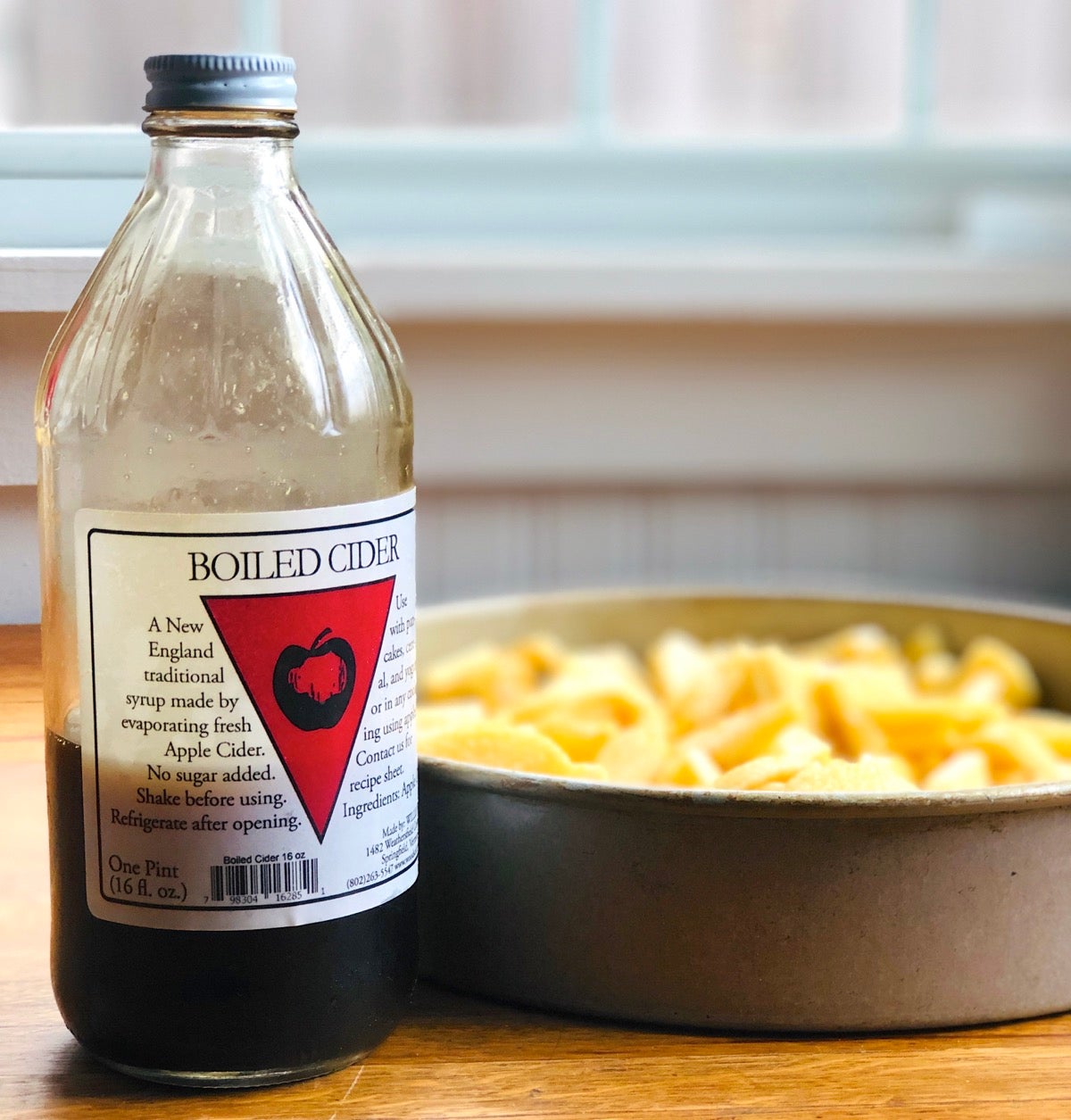
Baker’s tip: Grab yourself a bottle of boiled cider and toss a few tablespoons with the chopped apples in this recipe: it intensifies the apple flavor, helping it cut through what might otherwise be an abundance of sweetness. Stash the boiled cider in your fridge (it stays good basically forever) and use it every time you bake with apples this fall.
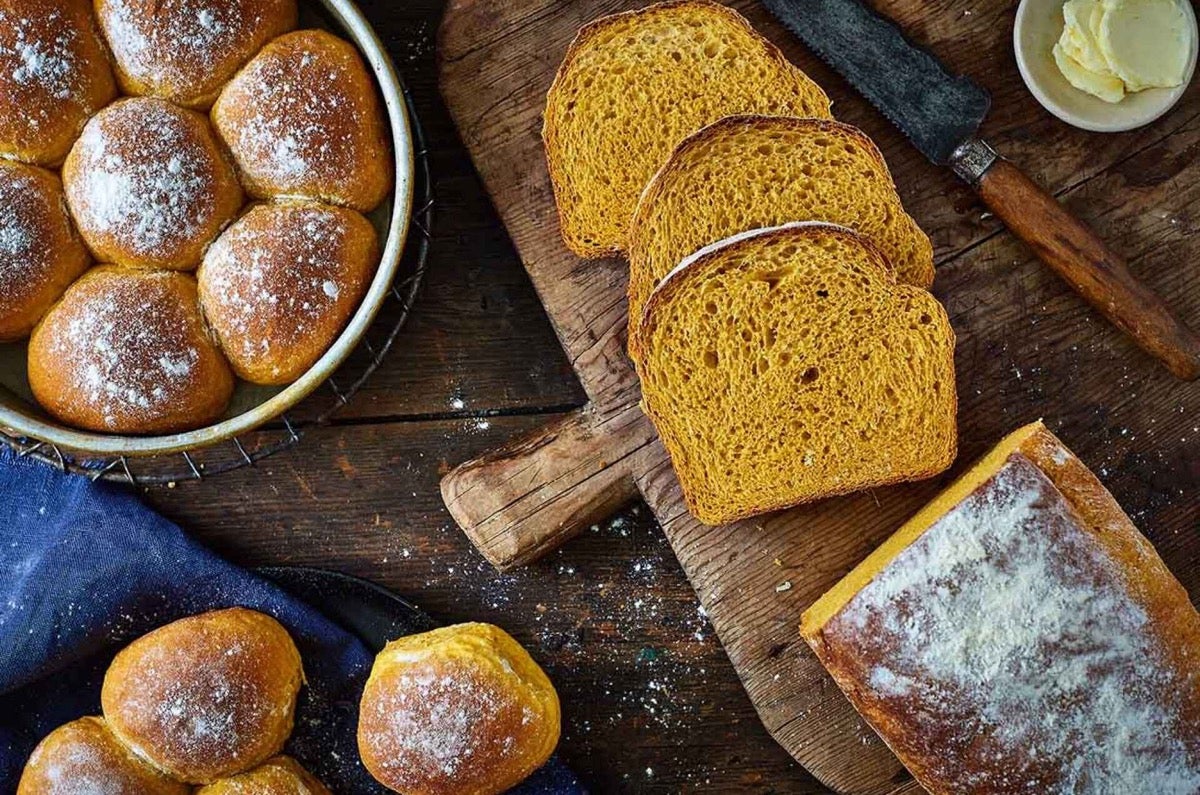
There’s pumpkin quick bread, the sweet, moist, dark-gold loaf we all know and love. And then there’s this pumpkin yeast bread: a light-textured, soft loaf perfect for sandwiches and toast. Substituting sourdough starter here simply adds another layer to the bread’s flavor.
How to substitute: Omit all of the milk and 120g (1 cup) of the flour. Add 227g (1 cup) discard starter to the bowl in step 1, along with the rest of the ingredients.
The result: Your dough may rise a bit more quickly and fully. And you’ll taste a bit of tang along with the flavors of pumpkin and mild spice.
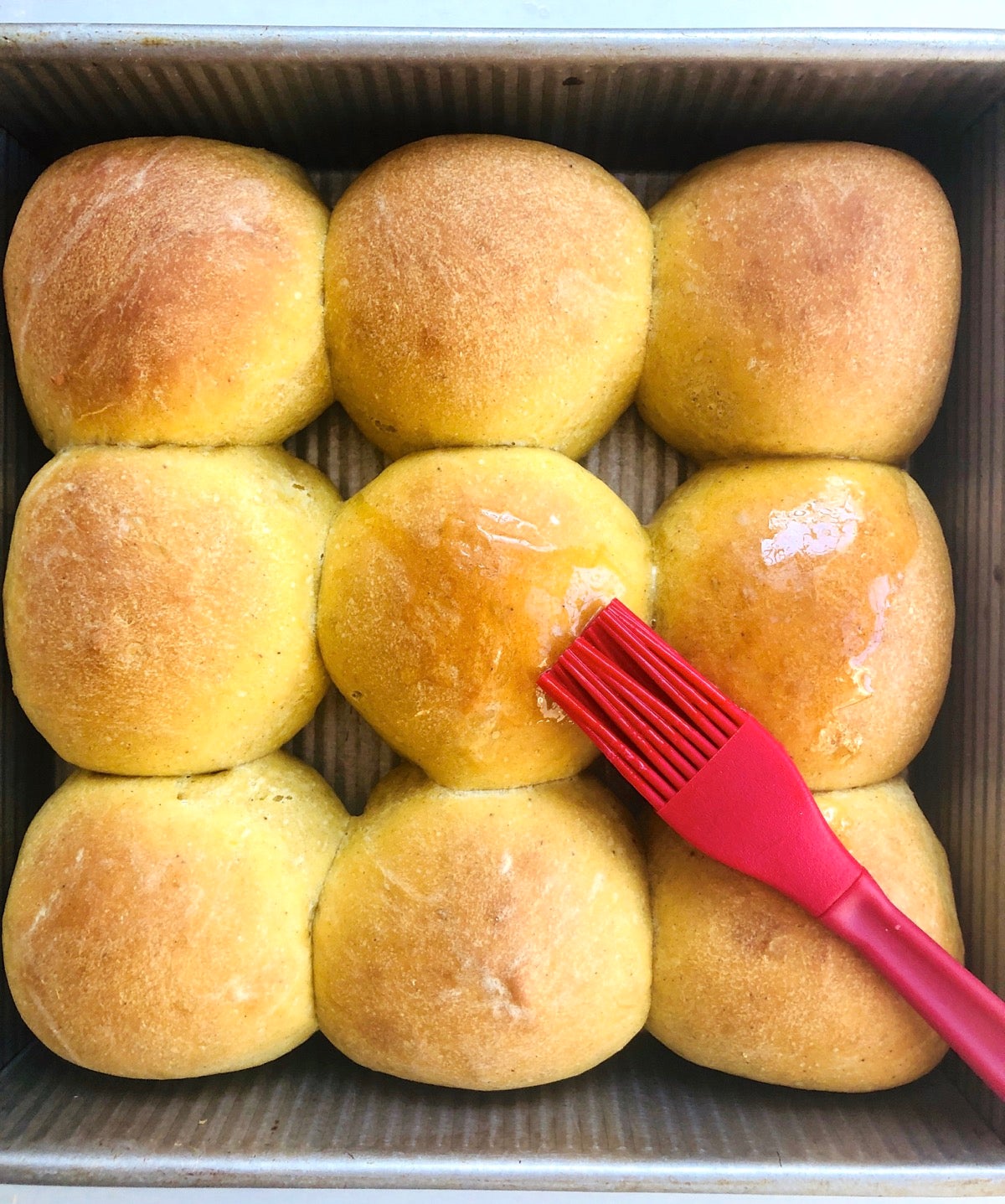
Baker’s tip: This recipe makes two loaves — but instead I like to make one loaf and nine large dinner rolls, perfect with soup or stew. Flatten the dough and bake the rolls on a baking sheet, instead of in a cake pan as I did here, for pumpkin hamburger buns!
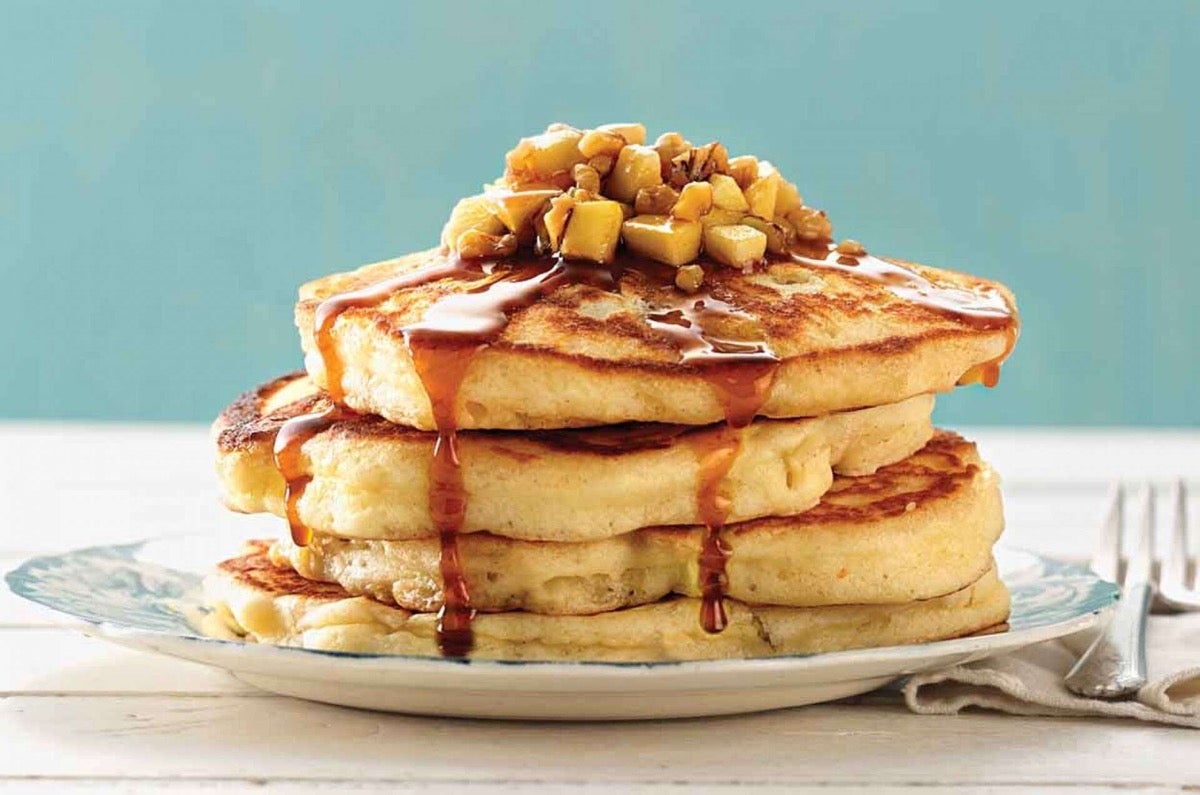
Substituting sourdough starter in pancakes is a natural, right? Sourdough flapjacks were a mainstay of California’s long-ago gold-mining community, and have remained popular to this day.
How to substitute: Reduce the flour to 60g (1/2 cup) and the milk to 113g (1/2 cup). Add 227g (1 cup) sourdough starter to the milk, egg, and oil in step 6.
The result: You’ll notice the pancake batter start to bubble immediately, thanks to the acid in the starter reacting with the recipe’s baking powder. Take advantage of that bubbly batter by getting it onto the griddle quickly and frying up some light-textured, flavor-packed pancakes.
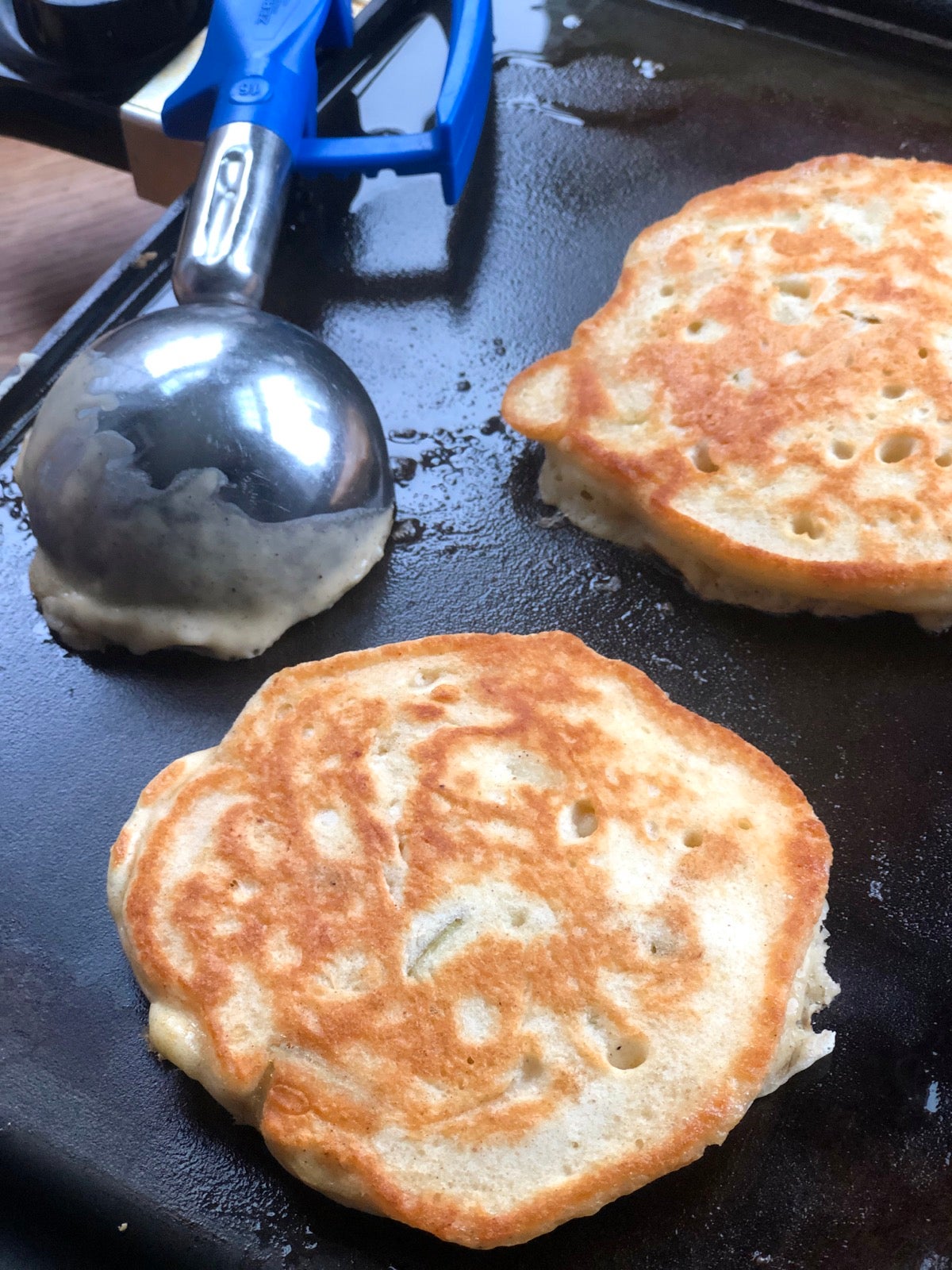
Baker’s tip: A muffin scoop is the perfect implement for dolloping 1/4-cupfuls of batter onto your hot griddle.
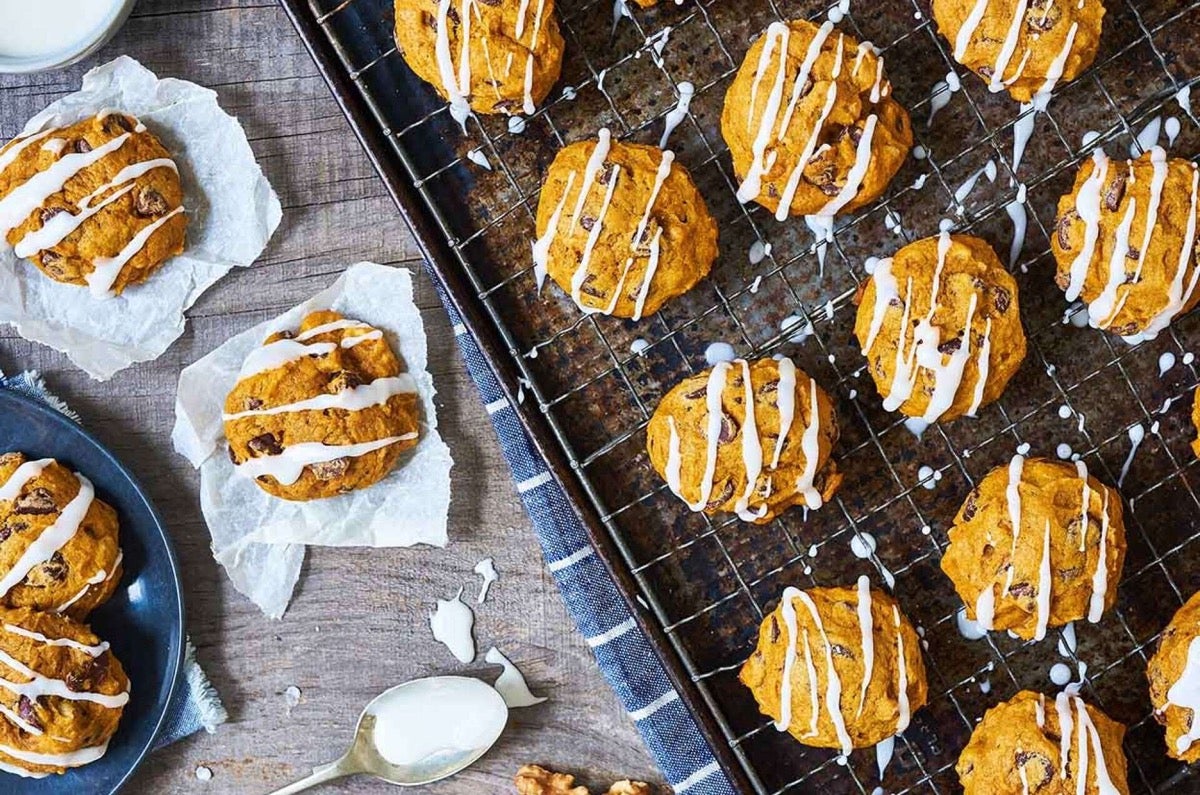
OK, time to bend the rules. The original recipe for these soft, moist Pumpkin Chocolate Chip Cookies doesn’t include any milk, water, or juice — so can you make them with discard starter? I tried — but adding discard transformed the dough into batter, unable to hold its shape as a freestanding cookie. The solution? Turn the cookies into bars.
How to substitute: Reduce the flour to 150g (1 1/4 cups). Add 227g (1 cup) discard starter at the same time you add the pumpkin, eggs, and vanilla in step 4. Pour the batter into a lightly greased 9” x 13” pan and bake the bars in a preheated 350°F oven for about 45 minutes, until a toothpick inserted into the center comes out clean of any raw batter.
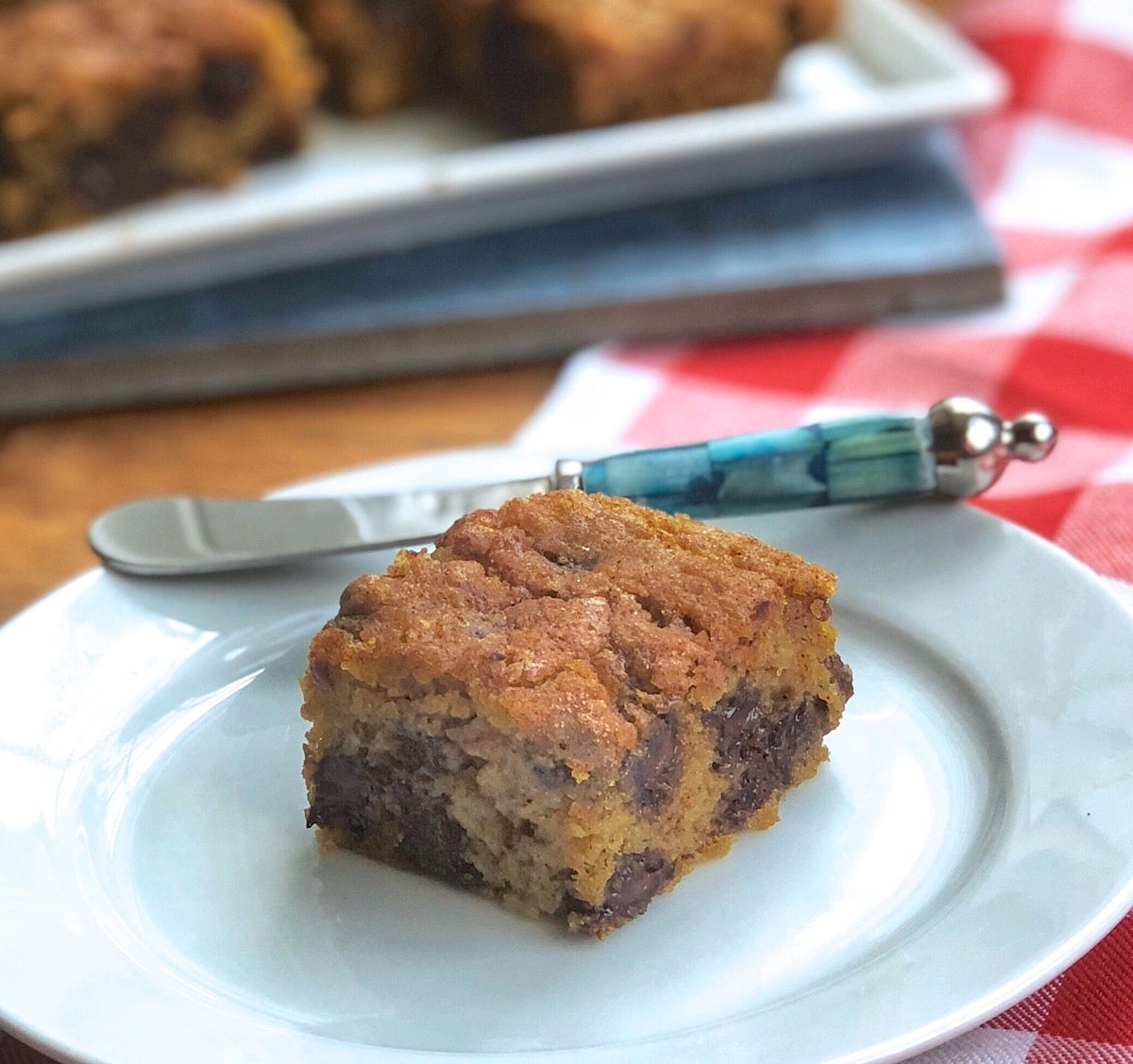
The result: In place of cookies you’ll enjoy delightfully soft, nicely dense pumpkin chocolate chip bars. Add the optional glaze if you like; I thought the bars (aside from being pretty plain visually) were fine without it.
Baker’s tip: These bars are cakey right out of the oven; for a “fudgier” bar, let them cool in the pan overnight before cutting and serving.
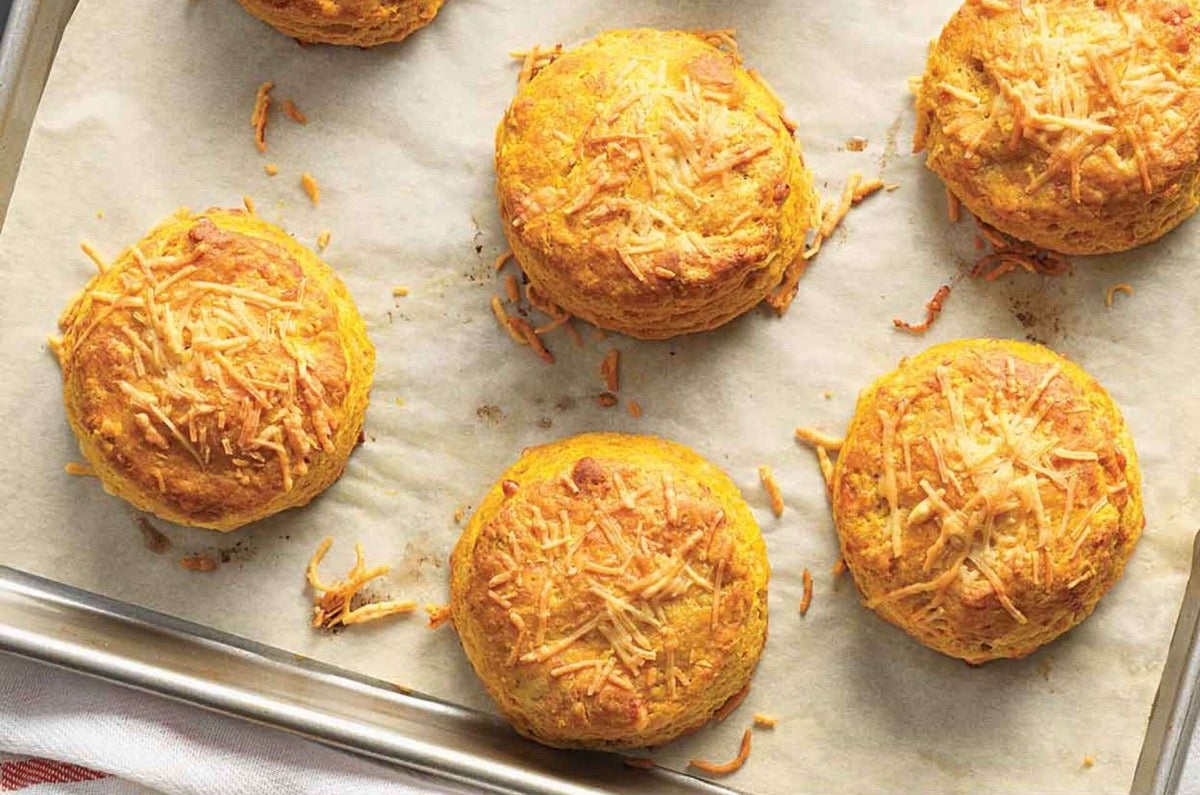
Rule-bender here again: I was dying to make these biscuits with discard starter because the originals are just so darned tasty — and extra flavor from discard starter would pair wonderfully with both cheddar (fermented) and pumpkin (earthy). One problem: no milk, water, or other liquid in the recipe. The solution: Transition these rollout biscuits to drop biscuits, which are made from a softer dough with more liquid.
How to substitute: Reduce the flour to 160g (1 1/3 cups); add 170g (3/4 cup) discard starter, stirring it in along with the pumpkin in step 4. Drop the soft dough in 1/4-cupfuls onto a parchment-lined baking sheet; you’ll make 12 biscuits. Bake the biscuits in a preheated 425°F oven for 20 to 25 minutes, until they’re beginning to color and any stray bits of cheddar on the crust are becoming a deep golden brown.
The result: Spongy rather than flaky, these tender, cheesy, tangy biscuits long to act as a mop for the last bits of soup or stew in your bowl. Barring that, a smear of salted butter makes them perfect all on their own.
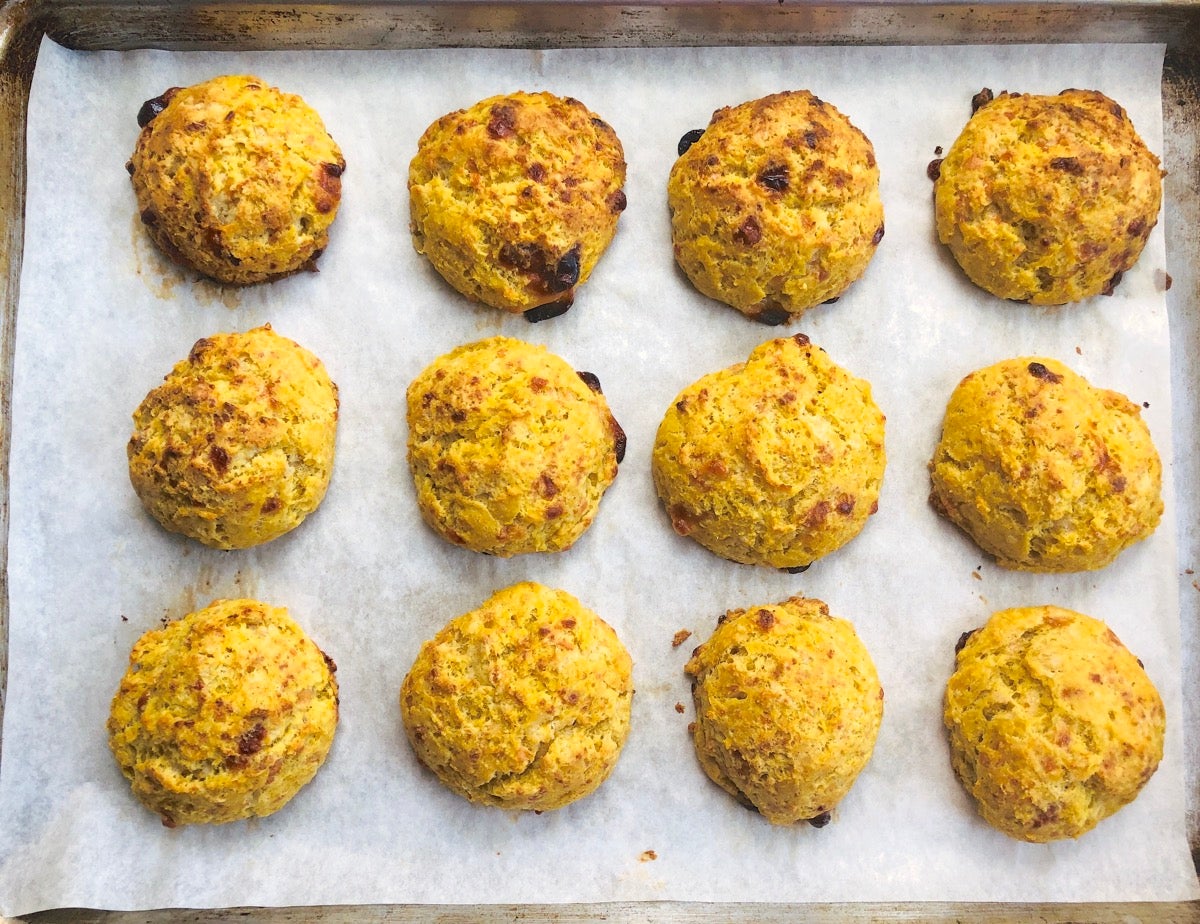
Baker’s tip: Do as I say, not as I did: Remember to rotate the pan back to front midway through baking, lest you end up with much browner biscuits at the back of the pan than at the front.
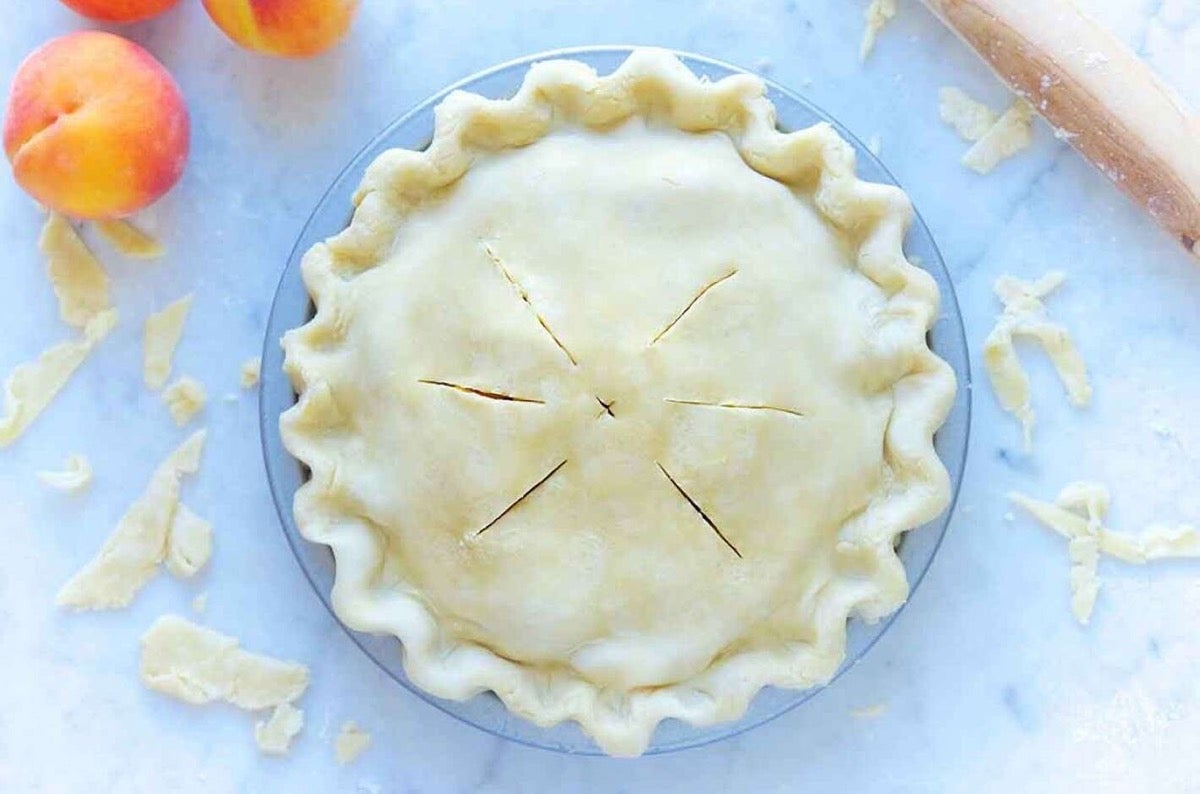
Wait, sourdough starter in apple pie? Where? In the crust, of course. Sourdough makes an unexpectedly good crust for fruit pies: its rich, subtle tang complements the sweet flavor of ripe apples — especially windfall apples which, having fallen from the tree and lain in the fading sun for a while, have developed their own slightly fermented tang.
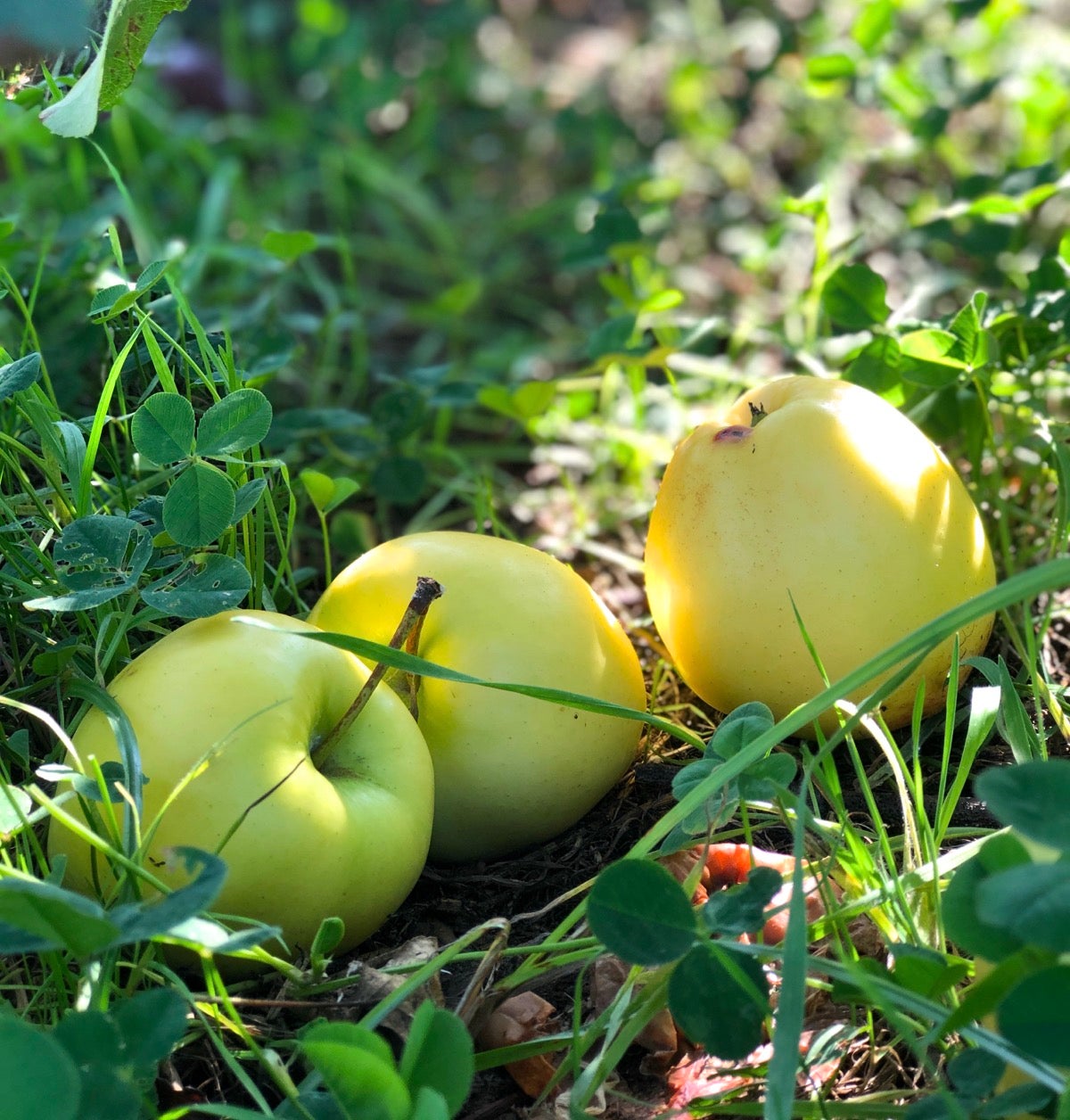
How to substitute: This one is a bit tricky since, as mentioned above, everyone’s starter is a slightly different hydration (liquidity), and the amount of water in your pie crust can spell the difference between ultra-flaky and super-tough. Here’s what I did:
Using our recipe for Classic Double Pie Crust, I reduced the flour to 210g (1 3/4 cups). I mixed the flour, salt, and fats until crumbly, then stirred in 170g (3/4 cup) cold discard starter in place of all of the ice water. Thankfully, the result was a beautiful dough: cohesive without being wet. After rolling out the bottom crust, I filled it with the filling from our Apple Pie recipe, added the top crust, and baked as directed in the Apple Pie recipe.
The result: Wow. The crust puffed up beautifully as the pie baked, thanks to the wild yeast in the starter. As it cooled the crust settled gently onto the cooked apples, yielding a pie whose tangy shell beautifully complemented its sweet filling.
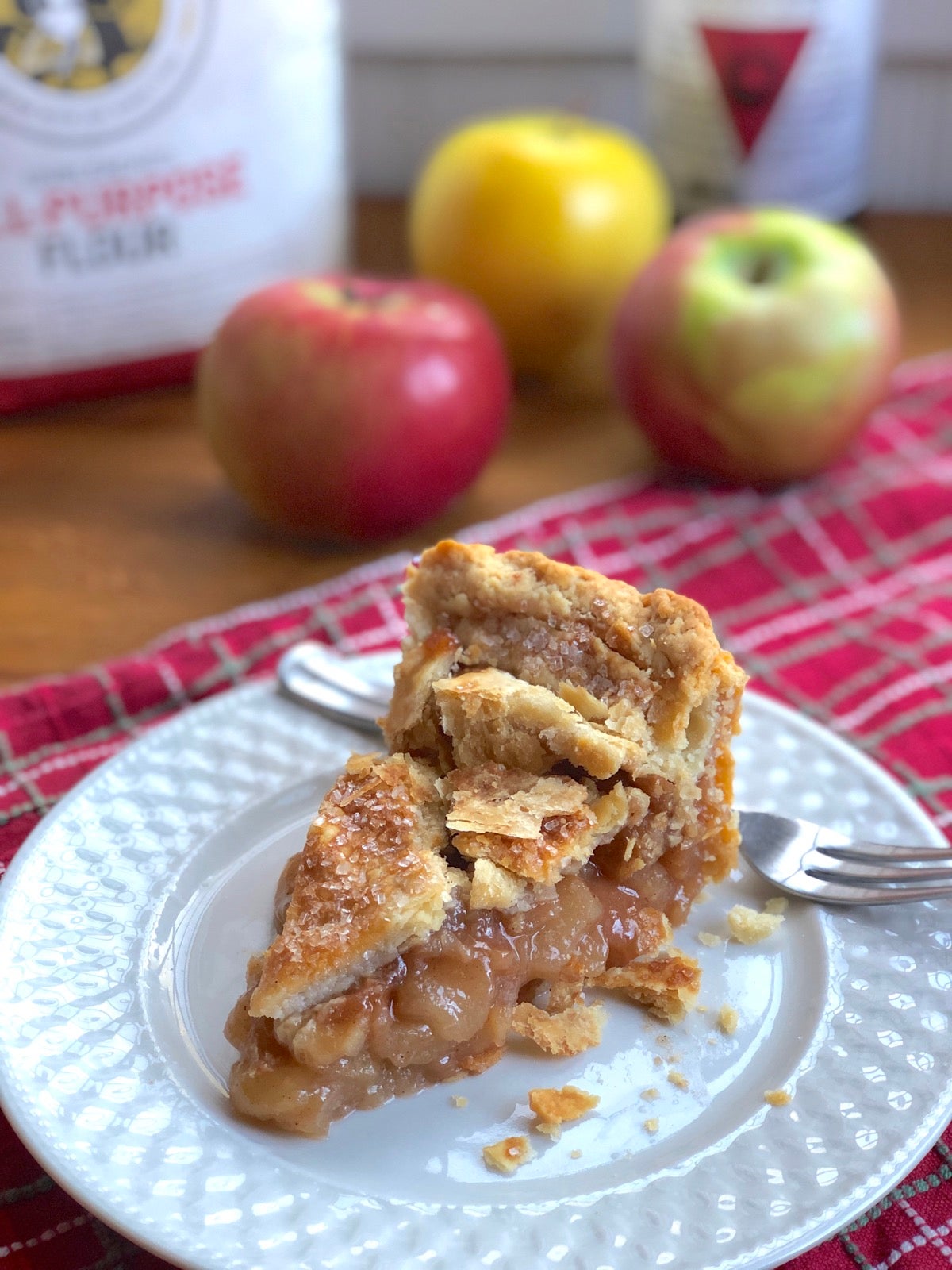
I feared the pie might be too tangy with the fresh, tart apples I’d used, but my audience proclaimed it just perfect: by itself or, even better, with a scoop of vanilla ice cream.
Baker’s tip: To account for discard starter that might be a different consistency than what I used, add the starter to the flour/fat mixture gradually. When the dough comes together in a cohesive ball, stop: you’ve added enough starter.
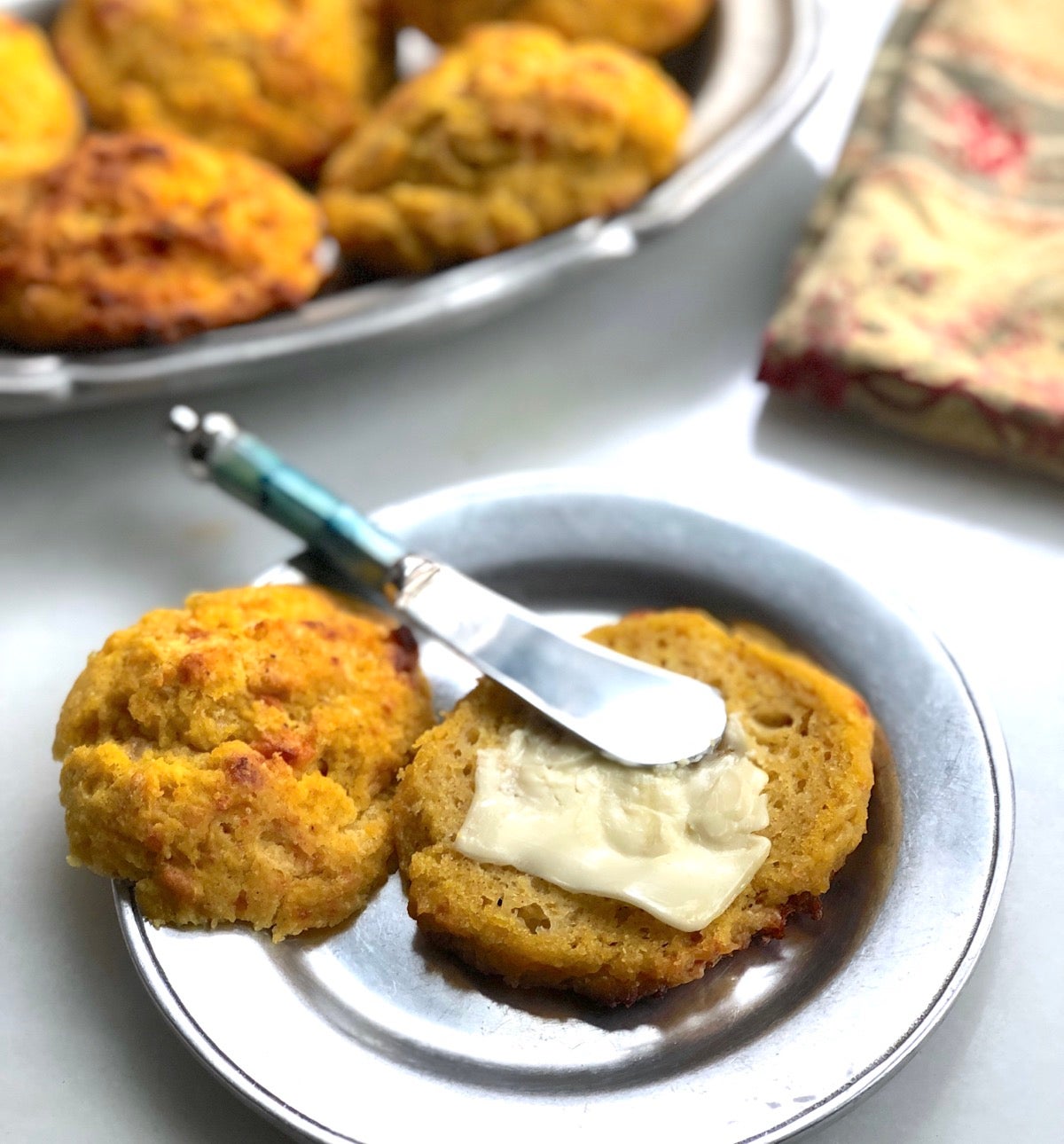
Substituting discard starter in some of your fall recipes is totally worth a try. Not only are you using up that discard starter, you may just be making a favorite recipe even tastier. Follow the substitution rules outlined above, but remember: keep it casual! I promise, a few grams less flour or more discard won’t spell the difference between success and failure.
